Gallbladder Attack
Most of the people have heard the term ‘heart-attack’ which occurs due to issues in blood supply of the heart muscles.
But what is a ‘gallbladder attack’?. A sudden pain in the abdomen due to disease of the gallbladder is commonly referred to as gallbladder attack (1).
This pain can be really scary due to its nature and severity.
Pain in the abdomen can be due to very many reasons. To identify where the pain is originating from, the doctor will have to obtain a complete history and may advise an array of investigations. Before sending for investigations, he/she will examine the abdomen appropriately to have a probable diagnosis for the pain origin.
Gallbladder – Anatomy
To understand gallbladder pain, the first step is to understand its anatomy. This includes its position and other structures related to it. Gallbladder is an organ which takes part in the digestive system. It lies just below the liver, on the right side of the abdomen.
Normally, gallbladder cannot be palpated (felt by hand) on the abdomen. In diseased condition, usually in acute cholecystitis, pain can be elicited at the site. This sign is referred to as ‘Murphy’s Sign’. Details about Murphy’s sign can be seen by clicking here (Link to article “Murphy’s Sign”).
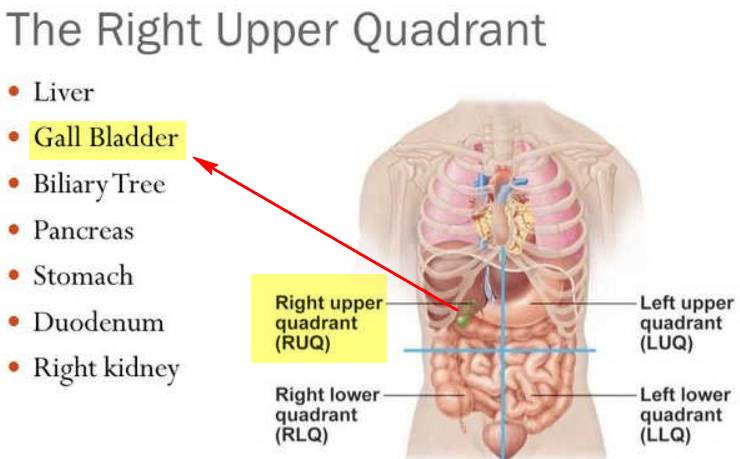
Image 1: The position of gallbladder can be seen in this image. The abdomen is divided into four quadrants. Right upper quadrant contains liver and gallbladder.
Picture Source: slideplayer.com
The structures, which include few ducts that connect other organs to the gallbladder or vice versa, can also, be diseased. Let us look into these structures to have a general idea about the anatomy of gallbladder.
Liver which produces bile (a greenish yellow, thick, viscous fluid) continuously (2), does not store it, but transports it to the gallbladder for storage. The transportation of bile from liver to the gallbladder is through few ducts.
Common hepatic duct is formed by joining of ducts from both the lobes (right and left) of liver. Gallbladder through the cystic duct connects with common hepatic duct, to form common bile duct (3). The common bile duct opens into second part of duodenum before which it receives the pancreatic duct (3).
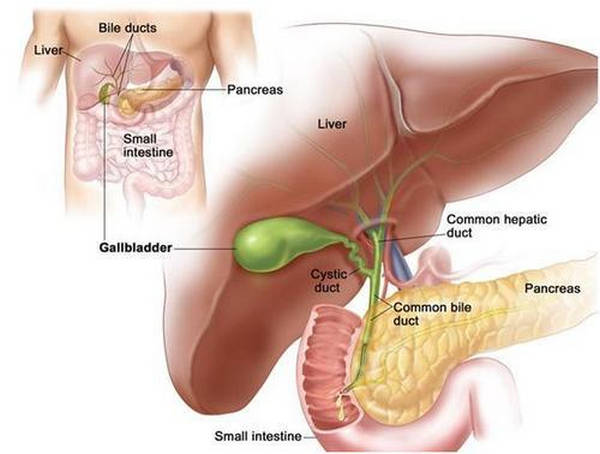
Image 2: Position of gallbladder under the liver (see : liver location), along with the ducts are shown in this image.
Picture Source: 3.imimg.com
The position of various organs and the content of different abdominal quadrants are given in detail, here (Link to article “Abdominal Pain”).
What causes gallbladder attacks?
Most common causes include
Gallstones
They are stones formed in the gallbladder. This may or may not cause symptoms. In many cases, the gallstones maybe found incidentally while investigating for other problems (4). In symptomatic cases, the major symptom gallstones produce is pain.
The pain can be intermittent or constant pain in the right upper quadrant of the abdomen, and may radiate backwards (3).

Image 3: A diagrammatic representation of gallstones at different sited in the biliary tract.
Picture Source: 5.imimg.com
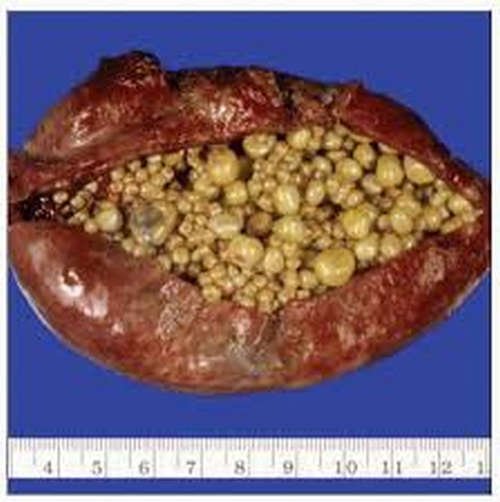
Image 4: An image showing a surgically removed gallbladder with multiple cholesterol stones.
Picture Source: encrypted-tbn0.gstatic.com
Acute cholecystitis
Acute cholecystitis is the acute inflammation of gallbladder. It is mostly seen in patients with gallbladder stone (7). Pain in the right upper quadrant of abdomen, along with fever and raised white blood cell count (leucocytosis) can be seen in this condition (3)(7).

Image 5: A pictorial comparison between a normal gallbladder and a gallbladder with acute cholecystitis.
Picture Source: 2.bp.blogspot.com
Biliary colic
Biliary colic is actually a symptom of gallbladder pain. It is usually described as a constant dull pain in the right upper quadrant of abdomen which may radiate towards back or scapula (shoulder blade) (3)(5, 6).
This occurs when there is contraction of gallbladder in response to stimulation by hormones or the nerves that supply gallbladder (4). Fatty foods are commonly known to trigger this. If there is a stone in gallbladder, the contraction pushes it towards cystic duct and can block the opening. This in turn increases the pressure inside the gallbladder leading to the pain (4).
It can persist for 30 minutes to 6 hours duration, by which the gall bladder relaxes and the stone falls back into the gallbladder (4).
Ascending cholangitis
This is also known as acute cholangitis. It occurs due to obstruction, stasis and infection of the biliary tract (8). Obstruction in the biliary tract can be caused due to stone, malignant growth or stenosis of the duct. Further to obstruction, there is stasis of bile, which leads to increased pressure in the tract.
Bacteria from intestine climb up through the duct and causes infection in the biliary tract (8). This can now be symptomatic in form of abdominal pain in the right upper quadrant, along with fever and jaundice, which is referred to as ‘Charcot’s triad’ (8)(3).
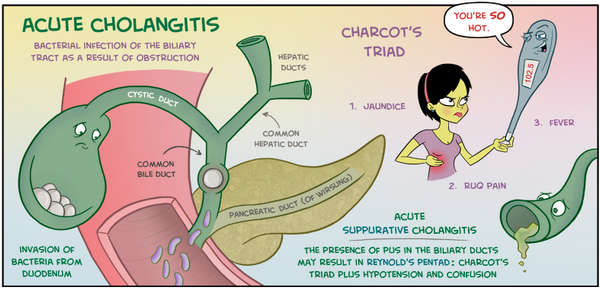
Image 6: Pathogenesis of ascending cholangitis.
Picture Source: coreem.net
What does a gallbladder attack feel like?
For most of the people, gallbladder attack is downright scary. This is chiefly because of the occurrence of pain suddenly, which can be severe, sharp or dull, but constant. Along with the pain, based on the cause, there can be associated features such as fever, vomiting, jaundice and increased sweating.
Symptoms of a gallbladder attack
In all the above given causes of gallbladder attack, one main factor can be noted as the gallstones. In general, most people with gallbladder stones remain asymptomatic throughout their lives (4). In addition, gallbladder attack symptoms vary based on the cause of the attack.
Biliary colic is associated with pain in the abdomen which may radiate backwards. Nausea and vomiting may also be present with it (3).
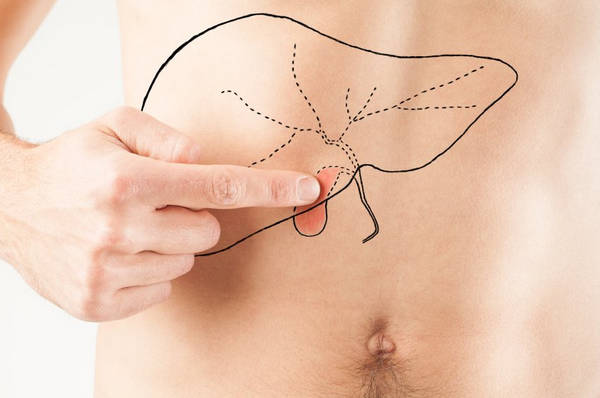
Image 7: Position of gallbladder
Picture Source: www.diarioonline.com
In acute cholecystitis, abdominal pain can be associated with nausea, vomiting, increased sweating, fever and chills. The duration of pain can be longer than that occurs in biliary colic (3).
Ascending cholangitis is characterized by abdominal pain, jaundice and fever (4). In severe cases, additionally there can be hypotension and mental status changes (10). Patients with gallbladder stones may show symptoms other than pain such as, belching, fluid regurgitation, fullness after meals and epigastric burning (4).
Signs of gallbladder attack
The gallbladder pain which brings a patient to the emergency department, as we have seen till now, can be different due to its cause. Once the patient has presented with a gallbladder attack, differentiating it by examination can be a daunting task.
In case of biliary colic due to uncomplicated stone, the pain in the gallbladder is truly visceral (pain is due to the stimulation of pain nerve endings on the organ itself) and not due to inflammation (4). We can also note that there is no peritoneal irritation that leads to rigidity of the abdomen.
Voluntary guarding can be shown by the patient in fear of pain while touching the abdomen (4). Murphy’s sign (explained above) is negative in case of biliary colic.
Murphy’s sign is positive in acute cholecystitis (4).

Image 8: Eliciting Murphy’s sign
Picture Source: i.ytimg.com
How long do gallbladder attacks last?
As we have seen, biliary colic can stay at least for 30 minutes and subsides by around 6 hours (5). The pain can be longer in case of acute cholecystitis (3). It can often stay for more than 12 hours (9).
Diagnosing gallbladder attack
The clinical history followed by a detailed physical examination helps in the diagnosis of the cause. Further investigations will be required to differentiate between various causes. Laboratory investigations and radiological investigations are the main stay in diagnosis.
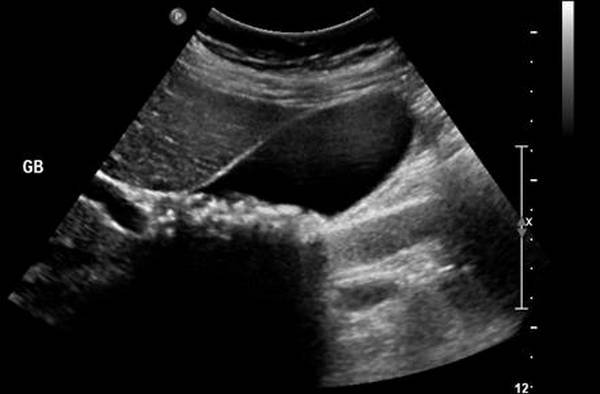
Image 9: An ultrasonography showing stones in gallbladder.
Picture Source: images.radiopaedia.org
Lab tests may include complete blood count, liver function tests and serum amylase and lipase (3). Abdominal X-ray can (4) be done to exclude other causes of abdominal pain such as perforation to the abdominal viscera.
Ultrasound of the abdomen (4) with specific focus on hepato-biliary system helps to identify gallbladder stones or disorders. CT scan can be useful in seeing structural changes to the organs (3). Sometimes, endoscopic ultrasound and bile microscopy may be required for the diagnosis (4). Oral cholecystography is still used rarely for diagnosis in gallbladder stones (4).
Treatment
A patient with gallbladder attack is faced with the main issue of pain. So the first step in management is pain relief. This can be done with NSAIDs (Non-steroidal anti-inflammatory drugs) or opioids (11).
Cholecystectomy (surgical removal of gallbladder) is the definitive treatment (4). Laparoscopic surgery is usually done nowadays. In certain cases medical dissolution of the stones can be considered with oral bile acids (4).
In cases of ascending cholangitis, management of sepsis and shock with supportive measures, including antibiotic therapy is required (8). Endoscopic sphincterectomy with stone extraction and stent insertion can be done to establish bile drainage (8).
Diet to prevent gallbladder attack
Gallbladder stores bile which is useful in digestion of fatty food. Contractions of gallbladder are more often seen with intake of such food items. Hence it is important to avoid items such as processed food, peanut oil, vegetable oil and food high in fat for people who suffer from gallbladder pain (12).
Food high in fiber and nutrients, such as citrus fruits, milk, fishes, beans, lentils etc can help in preventing gallbladder pain (12). Low fat dairy products and whole grains are also healthy diet for your gallbladder (13).
Reference:
- “gallbladder attack.” McGraw-Hill Concise Dictionary of Modern Medicine. 2002. The McGraw-Hill Companies, Inc. 21 Feb. 2018 https://medical-dictionary.thefreedictionary.com/gallbladder+attack
- en.wikipedia.org/wiki/Bile
- www.medicinenet.com/gallbladder_pain_gall_bladder_pain/article.htm
- https://www.uptodate.com/contents/uncomplicated-gallstone-disease-in-adults
- Diehl AK, Sugarek NJ, Todd KH. Clinical evaluation for gallstone disease: usefulness of symptoms and signs in diagnosis. Am J Med 1990; 89:29.
- LUND J. Surgical indications in cholelithiasis: prophylactic choleithiasis: prophylactic cholecystectomy elucidated on the basis of long-term follow up on 526 nonoperated cases. Ann Surg 1960; 151:153.
- www.uptodate.com/contents/acute-cholecystitis-pathogenesis-clinical-features-and-diagnosis
- www.uptodate.com/contents/acute-cholangitis
- www.msdmanuals.com/home/liver-and-gallbladder-disorders/gallbladder-and-bile-duct-disorders/cholecystitis
- DenBesten L, Doty JE. Pathogenesis and management of choledocholithiasis. Surg Clin North Am 1981; 61:893.
- Colli A, Conte D, Valle SD, et al. Meta-analysis: nonsteroidal anti-inflammatory drugs in biliary colic. Aliment Pharmacol Ther 2012; 35:1370.
- www.healthline.com/health/gallbladder-diet#gallbladderfriendly-foods
- www.webmd.com/digestive-disorders/features/gallbladder-diet-foods-for-gallbadder-problems#2
Published on March 1st, 2018 by Editorial Team under Pain Management.
Article was last reviewed on January 12th, 2022.

